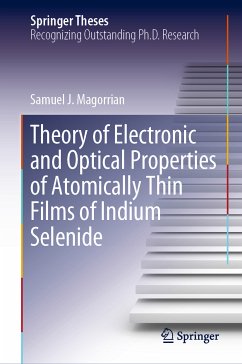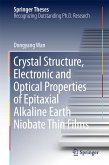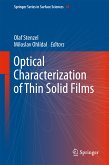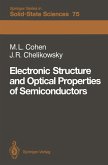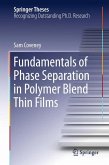This thesis provides the first comprehensive theoretical overview of the electronic and optical properties of two dimensional (2D) Indium Selenide: atomically thin films of InSe ranging from monolayers to few layers in thickness. The thesis shows how the electronic propertes of 2D InSe vary significantly with film thickness, changing from a weakly indirect semiconductor for the monolayer to a direct gap material in the bulk form, with a strong band gap variation with film thickness predicted and recently observed in optical experiments. The proposed theory is based on a specially designed hybrid k.p tight-binding model approach (HkpTB), which uses an intralayer k.p Hamiltonian to describe the InSe monolayer, and tight-binding-like interlayer hopping. Electronic and optical absorption spectra are determined, and a detailed description of subbands of electrons in few-layer films and the influence of spin-orbit coupling is provided. The author shows that the principal optical excitations of InSe films with the thickness from 1 to 15 layers broadly cover the visible spectrum, with the possibility of extending optical functionality into the infrared and THz range using intersubband transitions.
Dieser Download kann aus rechtlichen Gründen nur mit Rechnungsadresse in A, B, BG, CY, CZ, D, DK, EW, E, FIN, F, GR, HR, H, IRL, I, LT, L, LR, M, NL, PL, P, R, S, SLO, SK ausgeliefert werden.

